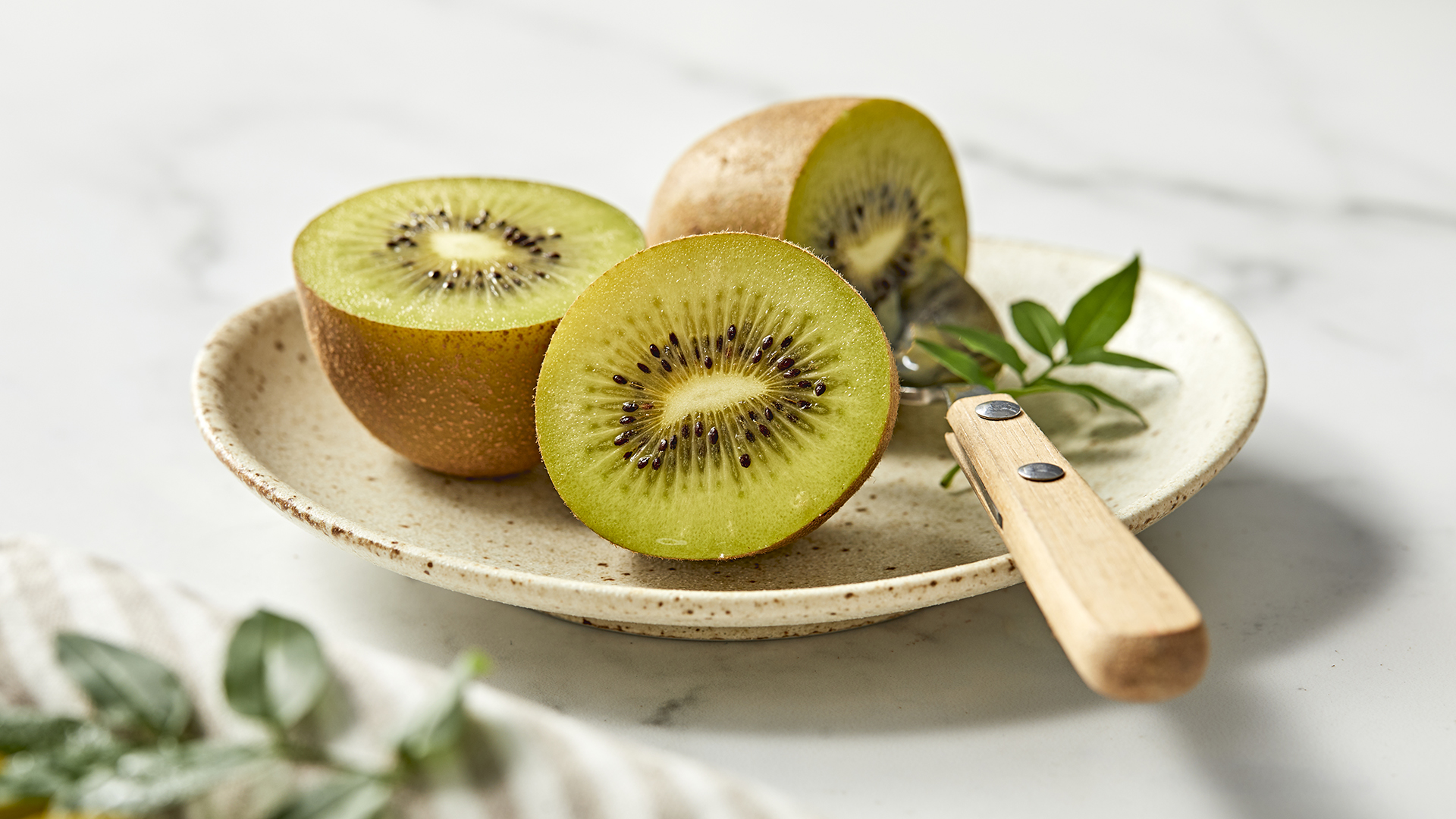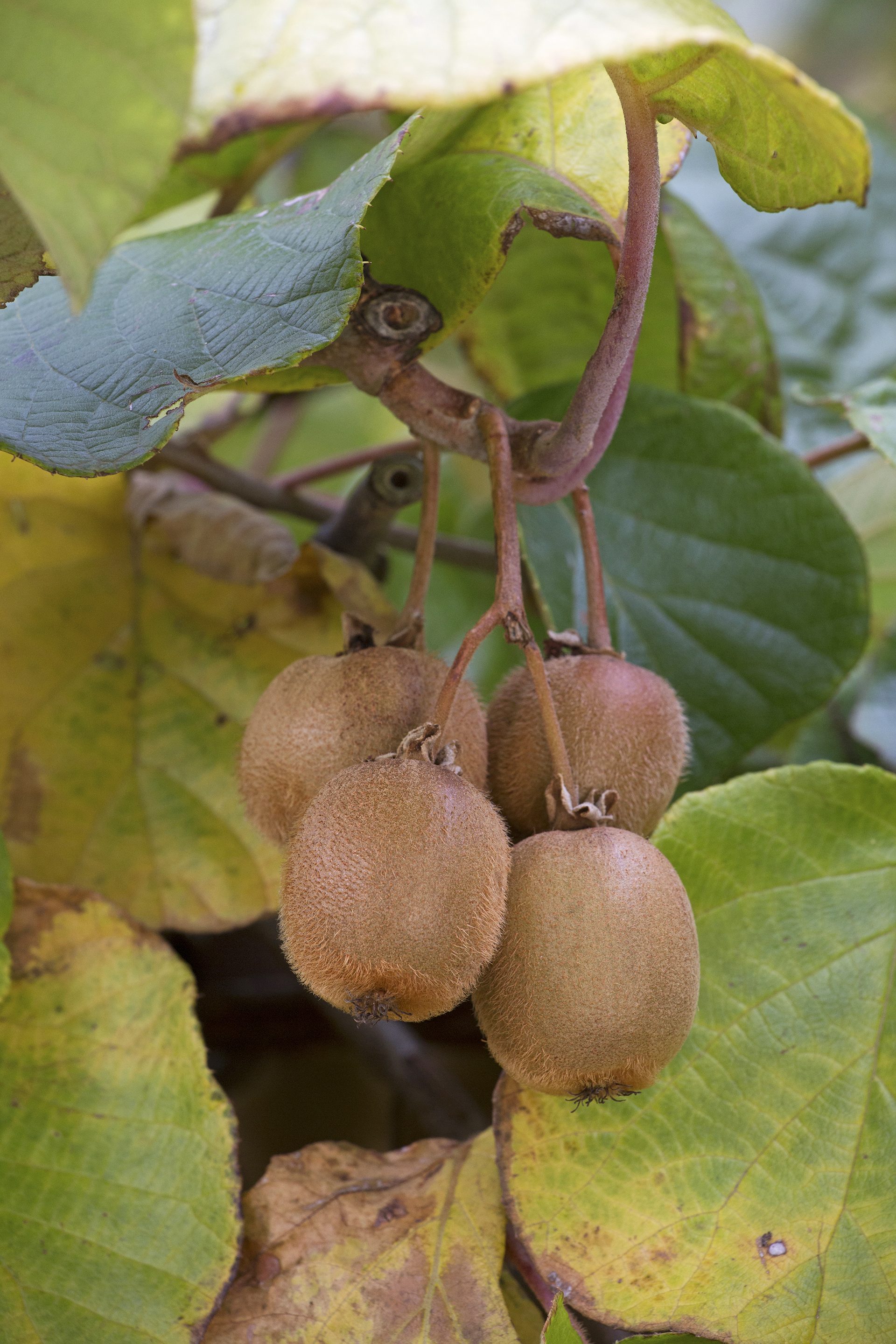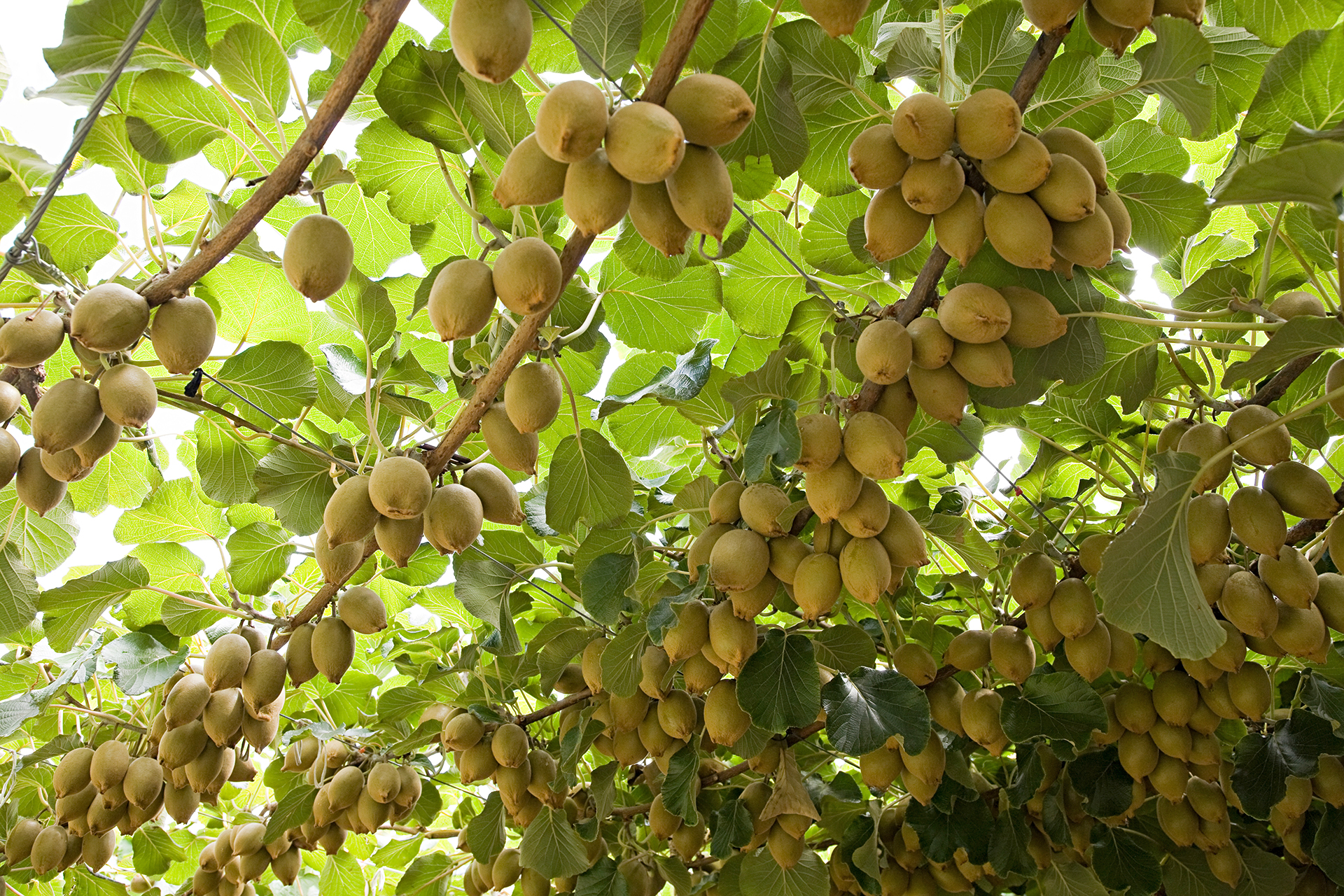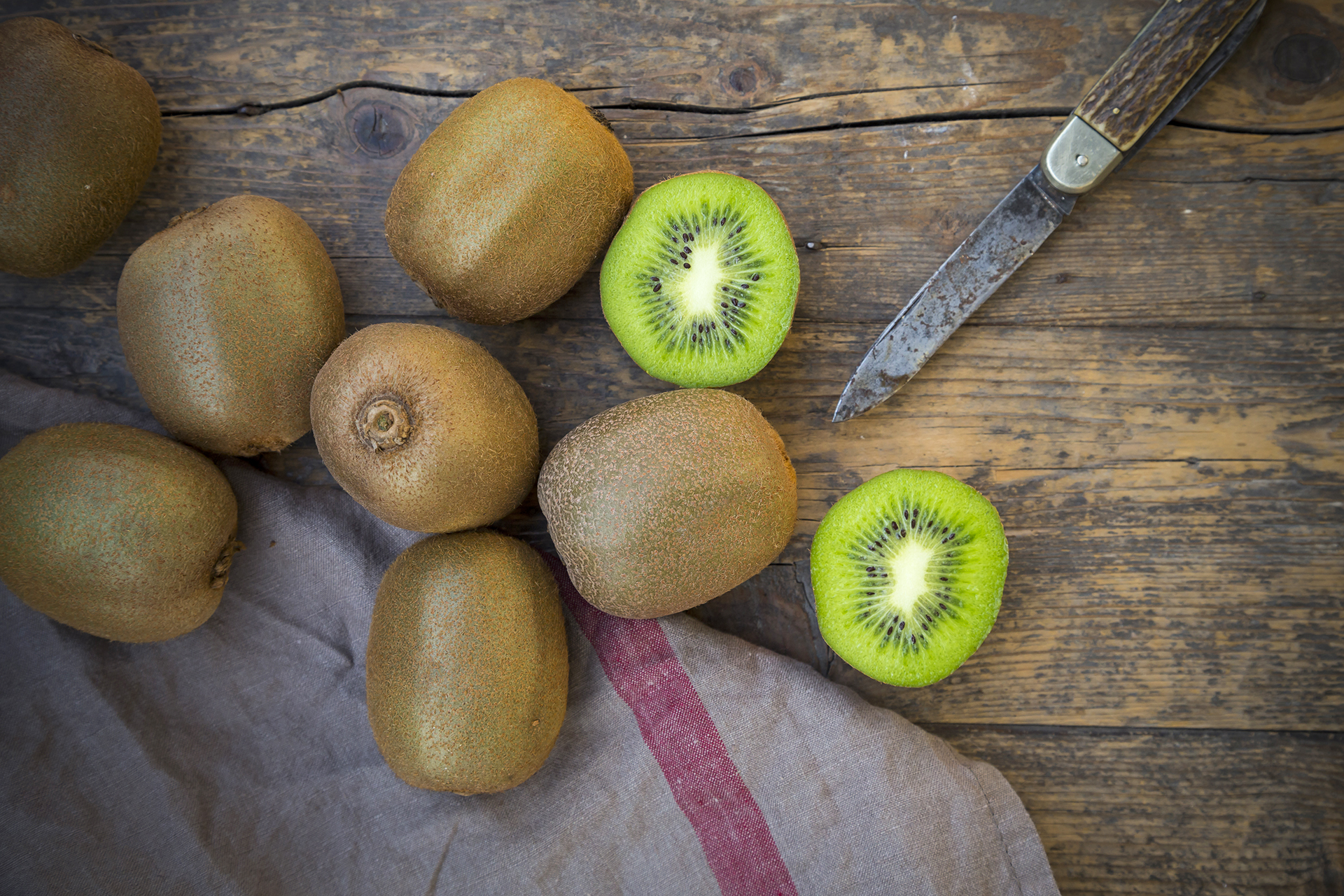How to grow kiwi from seed – for the most delicious fruits
Discover how to grow kiwi from seed for a beautiful feature in the garden that yields the most sumptuous fruit


Learning how to grow kiwi from seed, and bringing it to fruition, will be a source of great pride. It won't be a quick process, but if you are patient, you will be rewarded with the most heavenly tasting fruit that is rich in vitamins and antioxidants.
Kiwis are packed with more vitamin C than oranges, so will boost your immune system. They are also believed to have a positive effect on digestion and heart health, while being low in natural sugar. This makes them a great addition to your kitchen garden ideas.
‘Kiwi fruit vines are vigorous, hardy and easy to grow,’ says Period Living's gardening expert Leigh Clapp. ‘They need plenty of space on a strong support structure and will take three to five years to fruit.’
Bear in mind that most kiwis require both a male and a female plant to produce fruit, so you will ultimately need more than one plant unless you want to enjoy them purely for their lovely flowers and vines.

How to grow kiwi from seed
Growing kiwi from seed is not widely considered the best method of propagation, as the new plants will not be true to type – or, in other words, they won’t be exactly the same as the plant you took the seed from. Therefore, taking softwood cuttings in the spring is a much more reliable method of recreating an existing variety.
However, growing kiwi from seed is how growers create new cultivars, so it's a fun experiment. The plants make attractive features, and you might even create your own award-worthy variety.
Kiwi plants are best grown in a sunny sheltered spot, but are somewhat shade tolerant – although you won’t get as much fruit. ‘You could try kiwis on north-facing walls or spaces with less sunlight,’ says Clapp.
You can start off your seeds at any time, but ideally sow them in the fall for spring planting.
- Choose a well-ripened, ideally organic, kiwi fruit.
- Scoop out the pulp and separate the seeds. You may find you can easily remove and rinse them off, but a reliable method is to put the pulp in a blender with water, and blend for a few seconds. The seeds should then be easy to separate and rinse in a sieve.
- Either sprinkle the seeds over a tray of moist sand and cover with a plastic lid, or scatter them on a damp paper towel, which you should then place in a clear ziplock bag in a warm spot.
- The seeds should germinate within around two weeks.
- Transfer the sprouted seeds into small pots containing well-drained potting mix. If using the paper towel method, you can tear and plant small pieces, to avoid disturbing the seedlings.
- Keep the seedlings on a warm, sunny windowsill, or in a greenhouse.
- After 3-4 months, harden off the plants and either plant them outside in larger pots or into a garden bed. If it is winter, then it’s best to wait until spring to do this. They should ultimately be spaced at least 10ft apart.
- Kiwis like slightly acidic, fertile soil, so add organic matter before planting.
- As vine plants, kiwis will require training as they grow, so make sure you have good vegetable garden trellis ideas to support them. They grow very well as an espalier or overhead on a pergola.
- Mulch the plants annually – but keep it away from the plant base – and apply a general purpose fertilizer in the spring.
- Prune in winter, cutting back up to a third of the oldest branches to a bud close to the main stem, which will then produce new growth.
- Kiwis are vigorous plants, so also require summer pruning and pinching to keep them in check and allow the plants to focus on fruit production.
- Water well in warm weather, and ensure the soil doesn’t dry out in the growing season. However, the roots don’t like to soak in water, which is why free-draining soil is essential.

How many plants do I need?
As kiwi fruit relies on male to female pollination, you will require at least one male and one female plant, though one male is enough for every 6-8 female plants.
However, you won’t be able to identify the plants’ gender until they begin to bear flowers, which won’t happen in the first couple of years.
Female kiwi plants have blooms with long sticky stigmas coming out of their center, and white ovaries at the flower base. Male plants, meanwhile, are filled with pollen-covered anthers.
Once the plants have begun to flower, ensure each female is planted within 50 feet of a male, then let nature take care of the rest.
Which variety to grow?
Hayward is a popular variety for its quality and flavor. But you could also try Tormuri, Abbot, Brodie and Atlas – the males of which pollinate with any variety.
You can also choose between a common or golden kiwi variety, which have different flavors. Golden kiwis are more frost hardy.
Self fertilizing varieties are beginning to come onto the market, but the fruit is not as strong as with traditional varieties. If you only have room for one kiwi vine, try Jenny.
For something different, try mini – or cocktail kiwis. 'Mini kiwis are far sweeter than the furry brown fruits you buy in the shops,' says Alex Mitchell in Crops in Tight Spots. 'They produce small sweet fruits the size of large grapes, which can be eaten skin and all in early fall.'
Cocktail kiwis are very frost hardy and will grow happily in a generous pot, adding an exotic touch to the patio.

Growing kiwi fruit in pots
Kiwi fruit can grow very well in pots and grow bags, so make an excellent addition to a container vegetable garden.
While initially the pot size can be quite modest, you will need to pot on the plants as they grow. Ultimately, aim for a container size of at least 40 gallons.
How long does it take to grow kiwi from seeds?
While it only takes a couple of weeks to germinate kiwi seeds, to get to the stage where the plants produce fruit takes a minimum of 3 years, and could be as long as 6-7 years.
How do you germinate kiwi seeds?
To germinate kiwi seeds, you can either sow them into sand, well-drained potting mix, or on damp kitchen paper. Keep them moist and they should germinate within a couple of weeks.
What climate do kiwis grow in?
Kiwi plants are a versatile fruit, but they aren’t grown commercially in a huge number of locations. ‘Kiwi fruit originated in China and then was brought to New Zealand, the land of the kiwis,’ says Jordan Champagne in It Starts with Fruit.
‘It was in the 1970s that the first kiwi fruit crop was harvested in the United States in California, which is the only place in the United States where kiwis grow.’
Kiwis can be grown at home in many locations around the world, and are frost hardy, although they will struggle in very cold climates.
Sign up to the Homes & Gardens newsletter
Design expertise in your inbox – from inspiring decorating ideas and beautiful celebrity homes to practical gardening advice and shopping round-ups.

Melanie has worked in homes and gardens media for two decades. Having previously served as Editor on Period Living magazine, and worked on Homes & Gardens, Gardening Etc, Real Homes, and Homebuilding & Renovating, she is now focusing on her passion for gardening as a Senior Editor at Gardening Know How. As a keen home grower, Melanie has experimented with pretty much every type of vegetable at some point – with mixed results. Often it is the simplest things that elude you, which may explain why she just can't seem to master zucchinis.
-
 The great bedding debate: top sheet vs no top sheet − which side are you on?
The great bedding debate: top sheet vs no top sheet − which side are you on?I asked an expert panel of bedding designers whether you really need a top sheet to keep clean and cool or if it's just another ploy to make you spend money
By Emilia Hitching Published
-
 Thoughtful modernism – how one Dallas home makes bold contemporary design feel warm, welcoming, and comfortable
Thoughtful modernism – how one Dallas home makes bold contemporary design feel warm, welcoming, and comfortableWith its mix of textural finishes and carefully curated furnishings, this modernist home is a refreshing retreat
By Karen Darlow Published
-
 Water garden ideas – 9 ways to introduce soothing water to your outdoor space
Water garden ideas – 9 ways to introduce soothing water to your outdoor spaceFrom cascading fountains to wildlife ponds, there are plenty of ways to create a tranquil water garden
By Leigh Clapp Published
-
 How to grow poppies
How to grow poppiesFind out how to grow poppies to enjoy the beauty of these brightly colored tissue paper-like blooms
By Leigh Clapp Published
-
 How to grow delphiniums from seed
How to grow delphiniums from seedFind out how to grow delphiniums from seed and enjoy these colorful cottage garden favorites filling beds and borders
By Leigh Clapp Published
-
 How to grow ferns – when and how to plant and care for them
How to grow ferns – when and how to plant and care for themLearn how to grow ferns to enjoy the texture and form of these versatile plants in many areas of your garden
By Leigh Clapp Published
-
 How to grow sweet peas from seed – in borders and pots
How to grow sweet peas from seed – in borders and potsFind out how to grow sweet peas and where to enjoy their wonderful color, ruffled blooms and sweet fragrance in your garden
By Pippa Blenkinsop Published
-
 How to make fat balls for birds – easy steps feed our feathered friends
How to make fat balls for birds – easy steps feed our feathered friendsLearn how to make fat balls for birds to ensure their wellbeing throughout the winter
By Holly Reaney Published
-
 Planning a kitchen garden – from layouts to picking the best crops
Planning a kitchen garden – from layouts to picking the best cropsPlanning a kitchen garden is easy with this expert advice – whether yours is in beds, borders or a dedicated patch – you're guaranteed success
By Leigh Clapp Published
-
 How to grow cosmos – expert tips on when and where to plant these flowers
How to grow cosmos – expert tips on when and where to plant these flowersLearn how to grow cosmos to add bright color in your garden from summer through to fall with their beautiful blooms
By Leigh Clapp Published